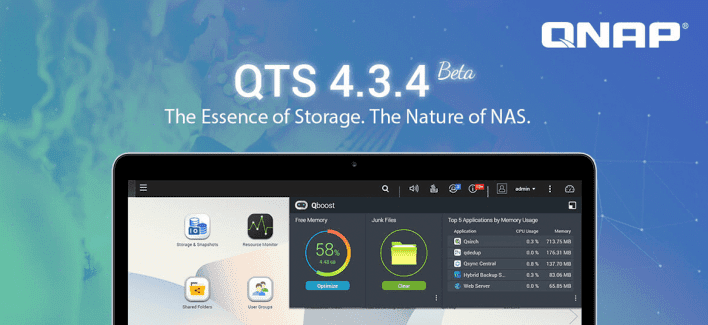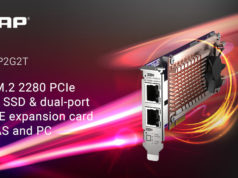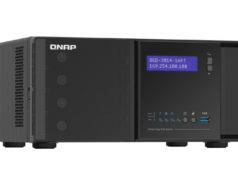QNAP Systems has announced the official release of QNAP QTS 4.3.4, the latest release of its comprehensive NAS operating system. This time its all about the essence of storage!
QNAP QTS 4.3.4: The Gist
One of the world’s leading NAS & NVR provider, QNAP Systems Inc is based in New Taipei City, Taiwan. Richard Lee & Meiji Chang founded this company in 2004. Since then it has been a private firm. The networked solutions provided to small-to-medium businesses(SMB) & small office/home office(SOHO) markets.
QNAP, which stands for “Quality Network Appliance Provider”, started of as a subsidiary of IEI Integration Corporation. NAS is Network Attached Storage. NAS systems are networked appliances which contain one or more storage drives, often arranged into logical, redundant storage containers. NVR is Network Video Recorder. A network video recorder (NVR) is a software program that records video in a digital format to a disk drive, USB flash drive, SD memory card or other mass storage device.
Achievements
- Received ISO 27001:2013 certification in information security management, in 2014.
- HS-210 Turbo NAS received 2014 iF Product Design Award
- TS-469 Pro Turbo NAS featured in PC World’s 50 Best Tech Products of 2013
QNAP QTS 4.3.4 – The Essence of Storage!
QNAP finally released it’s NAS solution , QTS 4.3.4. A milestone in the company’s history. It gives us a brand new way at the concept of storage. Their website reads QTS as the “Essence of Storage” . QTS empowers QNAP’s comprehensive NAS solutions with higher performance, multifunctional capabilities, and greater security.
“QNAP not only resolves current IT needs by increasing the accessibility of snapshot support (now available with only 1GB RAM) to help users effectively mitigate the impact of ransomware attacks, but also realizes future IT trends by going beyond storage to advance in graphics processing, Internet of Things, and various new technologies for multimedia experiences,” said Tony Lu, Product Manager of QNAP, adding “The continued development of QTS provides QNAP NAS with great potential to play a core role for current and future IT infrastructure requirements.”
Also Read,10 Best Chinese Laptops 2018 (Early): Top Pick!
Some of its new features worth mentioning are:
1) Brand-new Storage & Snapshots Manager
The revamped user interface not only simplifies storage management but also further emphasizes visualized snapshot management with helpful information.
- Storage Overview:
Quickly obtain the status of all volumes and storage pools at a glance. Now, you can also easily identify the type of each volume and LUN - Snapshot Overview
Manage your snapshots with the most professional and detail-driven interface. All the snapshot versions and the time of your latest snapshot are precisely recorded.
2) Mitigate the threat of ransomware with block-based snapshots
QNAP’s snapshot support is block-based which is beneficial for reducing storage space usage and accelerates creating and restoring snapshots compared to file-based snapshots, providing a great tool for meeting business requirements on achieving Recovery Point Objectives (RPO) and Recovery Time Objectives (RTO).
3) Cost-efficiency from ARM-based QNAP NAS
QNAP NAS users, with help of a key data backup and recovery solution, can now safeguard their data without compromise, no matter if they are using a high-end, SMB, or entry-level NAS.
4) Maximize storage investment with Global SSD Cache Technology
QNAP’s global SSD cache acceleration technology can share a single SSD volume/RAID with all volumes/iSCSI LUNs for a read-only or read-write cache.
5) Optimize graphical calculation
Graphic card resources can be applied in following ways
- a)QTS image processing
Graphics cards empower imaging processing efficiency of QTS, greatly reducing wait times. By utilizing a graphics card, the processing time of HD videos can be shortened by 10-33% . - b)HD Station / Linux Station
NAS models that lack native video output can benefit from the HDMI output of graphics cards to view HD Station or Linux Station. - c)Virtualization Station
GPU Pass-through strengthens the capabilities of virtual machines and provides smoother performance.







